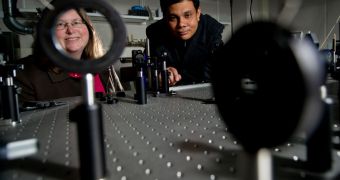Given that Parkinson's disease is largely triggered by the release of a particular protein in the human brain, discovering the condition when it sets on implies being able to prevent this molecule from building up in the brain. This is precisely what a team of researchers recently managed to accomplish.
But, while this may sound very good in theory, it is extremely difficult to transpose in practical terms. Detecting Parkinson's disease as it takes hold of the brain has never been done before. But scientists with the Michigan State University (MSU) believe they may have found out a way to do this.
They say that their approach allows them to treat high concentrations of the low-wriggling alpha-synuclein proteins, so that they no longer lead to the aggregation (clumping) that represents one of the most significant hallmarks of Parkinson's.
By preventing the ASP from building up in the first place, doctors may be able to prevent the condition from affecting the brain in the first place, making it unable to irreversibly damage nerve cells. The MSU team was led by postdoctoral researcher Basir Ahmad.
Details of the research effort were published in this week's issue of the esteemed journal Proceedings of the National Academy of Sciences (PNAS). The experts say that the clumping up of proteins occurs when they are folded improperly. Folding is the process through which these molecules are produced.
In Parkinson’s disease, Alzheimer’s and Lou Gehrig’s disease, the clumping up of proteins forms structures known as plaques, which cause neurons to degenerate, and eventually die off. This leads to cognitive impairments, among a wider array of symptoms.
The protein alpha-synuclein was recently the target of a new laser study, conducted by MSU associate professor of physics and astronomy Lisa Lapidus, and her team. The research managed to establish a connection between the proteins' rearrangement speed and their tendency to clump up.
“There are many, many steps that take place in aggregation, but we’ve identified the first step. Finding a method to fight the disease at its first stage, rather than somewhere further down the road, can hopefully increase the success rate in which the disease is treated,” Lapidus explains.
“We are now looking for molecules that can alter the protein when it first begins to ‘misfold,’ which could eventually lead to the development of a drug that could prevent aggregation before it happens,” the investigator goes on to say.

 14 DAY TRIAL //
14 DAY TRIAL //